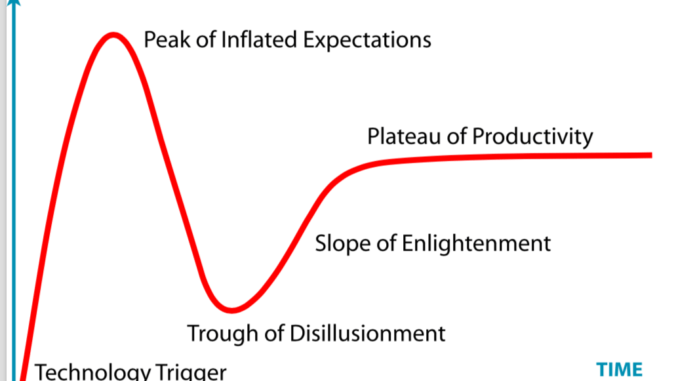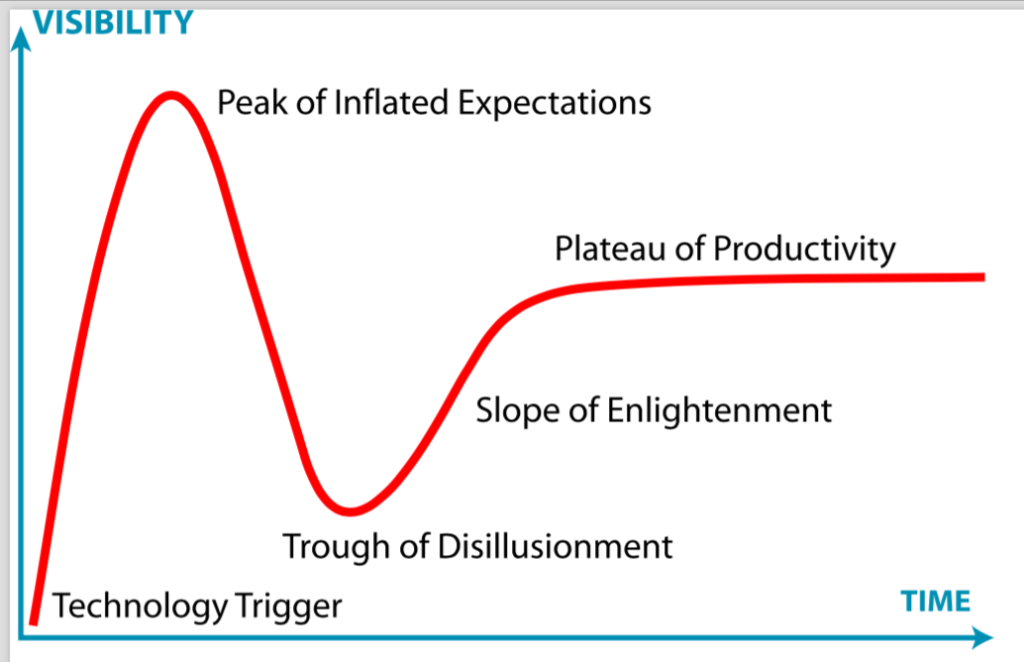
There is a well-known marketing saying: ‘Don’t sell the product, sell the benefits.’ That is to say, explaining to a car buyer the technical specifications of an engine won’t sell you many vehicles, but if you describe the improved driving experience, the better fuel consumption that will save money, and the increased safety benefits of this model, then you may well have a sale on your hands.
Equally, if for example a law firm was considering the hire of a team of lawyers, or the opening of a new office, the economic benefits of doing so would be a key consideration behind the strategy. Artificial Lawyer’s alter ego, Tromans Consulting, has spent many years working on strategy projects for law firms and the economics of any significant step are fundamental to a decision being made. Yes, sometimes there is a ‘me too’ approach, such as seen by the many foreign offices in China that don’t make a profit. But generally, law firm leaders are highly pragmatic and super-focused on the financial aspects.
The questions: how much will it cost us; what will be the benefits to the partnership; and how soon will we see those benefits? Are all totally valid for partners to ask. In fact, if they were not asking such questions and merely wanted to open an office in a certain place, or hire a team of lawyers in a certain practice area without thinking through the economics and ROI, then one can usually safely bet that the strategic step will not be very fruitful.
So, what does this have to do with legal tech? A lot it would seem.

For a long while now it’s been clear that many legal tech companies shy away from publicly talking about data related to their product, at least in detail.
For example, Artificial Lawyer has been suggesting to legal AI doc review companies for some time that a public ‘bake off’ is held that pits several AI companies against each other on a set of data to show which gets the best overall accuracy results over a set time.
With the exception of one or two, there has been little interest in ‘opening the kimono’, as they say. In fact, the recent public revelation of a vetted accuracy test by LawGeex gained media attention around the world precisely because this type of making public of detailed performance results remains rare.
But, the paucity of economic and ROI data is even more extreme. Ironically, legal tech companies seem to have inherited some of the bad habits of the legal world, such as really not liking to explain their pricing or the economic benefits of using their systems, at least in public.
A couple of years ago it would have been very hard for, by way of example, a doc review company, to show a clear ROI on the investment the law firm made in the technology, because most law firms were at best only in a test phase back then. It’s hard to create detailed economic analyses when you’ve only used a certain legal AI system a couple of times on real client matters.
However, by now, that picture should have changed. There are sufficient firms and corporates out there who have been using automated technologies, for the tech companies to be able to have insights into the financial benefits of moving from manual review to machine review.
Yet, aside from a couple of sound bites, such as ‘law firms saved X% time in the review process’, we hear precious little. Moreover, the details around the reviews in question are left vague. What reviews? How large were the document stacks? How complex were the reviews in that example? How was this time saving measured? Did it include the training of the NLP? How much training took place?
And then there is the money question. Has the law firm, or corporate, been able to calculate that they have made any savings? Have the firm and the tech company sat down together and looked at the numbers and seen an ROI? What are those figures?
Or, if we turn this around to focus on new value creation, as Artificial Lawyer tries to do when in a speaking slot in order to get beyond the efficiency vs human lawyer dynamic, how much value was created? If a law firm used an NLP system to create new insights into legal data for a client, what actual monetary value was delivered?
And don’t even start on trying to get most companies to be transparent on pricing, that seems to be about as popular as the idea that Big Law firms should put their prices on their front door for each type of matter for all to see. But….why not? Why doesn’t every legal tech company publish its pricing structure? Now, some legal tech companies do this and do it well, but this is by no means normal yet.
What Does This Mean?
The lack of economic transparency, the lack of public data, the lack of clear examples of ROI, creates a rod for legal tech’s own back.
Some wonder why law firm leaders are slow to really exploit legal technology that can perform work across their business, as opposed to doing pilots and press releases. But the answer is there: they need evidence that it’s going to help economically before they can fully commit.
I don’t know if you’ve ever sat in on a discussion of a management board about PEP and associate salaries, but – wow – if you don’t think that money is at the heart of any law firm, then you’re going to be surprised.
I’ve seen partners, (earning six and seven figure annual incomes), tearing their hair out because PEP has dropped by a couple of percentage points. So anything that may help or hinder that magic number is going to matter big time. And legal tech is walking right into the middle of this.
Into The Trough
The hype phase of AI is now coming to an end – and that’s a good thing. We’re now in Gartner’s ‘trough of disillusionment’ (see table below).
Personally, I think this is a welcome development. Rather like the stages of growing up, each phase of life has its pros and cons, but each stage also promises the opportunity to move to the next stage, in this case, the new wave of legal tech really becoming widespread because the economic case and ROI argument has been won and the partners of law firms, and the GCs in the corporates, will then fully believe in its value. I.e. we’ll go through this ‘awkward’ stage and get to the plateau of productivity and then really motor forward.

But, we are not there yet. And being realistic we won’t be there for several years to come. Getting legal AI and other forms of automation through the door of law firms on a wave of excitement over new technology has been essential to getting this process started. And, given the size of the legal market there are still hundreds of firms around the world saying: ‘Machine learning…? For law firms? What is all that about?’
I.e. while some law firms may now be in the trough, others are just at the very beginning of the hype cycle. That said, overall, and certainly among the larger firms in the US, UK, Western Europe that have now had a chance to experiment, they are onto the harder issues above that relate to money, not technology.
Or, to put it another way: the business of legal AI, rather than the technology of legal AI, is what will really matter from now on.
Barriers to Change
Although it’s frustrating to see this lack of financial data in the legal tech world, it’s understandable. Law firms don’t like to share data about all their activities, although they have been handing out details of their financials for many years now, right down to their profit margins and property costs. So, giving out data on tech’s impact is not impossible.
Another challenge perhaps stems from the legal tech companies themselves. Many start-ups tend to involve a combination of former lawyers and coders as their founders. Neither are naturally focused on economics. They are in love with the technology and how it can change working practices, improve efficiency, create new insights – and all of this is brilliant and 100% valuable. But, it may not be the language of economics that the law firm clients need to make better use of their inventions.
In which case the barriers are high for change here and we are not going to see change overnight. But, if as a legal tech ecosystem we can all spend more time on the ROI and economics and hopefully get more of this information out into the public domain over 2018, that would be a great start.
Last Word: Money and A2J Tech
It may be tempting to think that the focus on legal tech economics is only for Big Law, but not so. One way for A2J Tech companies and programmes to see wider buy in, is to also show the economic benefits to those who hold the purse strings of legal aid and who run the courts.
For Artificial Lawyer, charity and pro bono are never going to solve the justice gap problem alone. They are very welcome efforts, but they cannot scale sufficiently to make a major dent in this global challenge. But, if governments and their legal aid agencies could see the economic benefits of using more technology, then perhaps this could encourage more funding for A2J Tech initiatives. Just a thought that hopefully underlines that the economics of legal tech also has a more altruistic dimension as well.
Hope that was stimulating. If you’d like to share your thoughts on this challenge, please drop me a line.